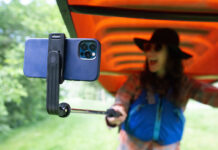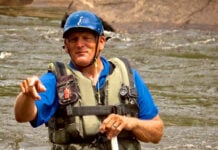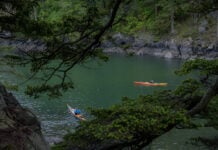While their roots can be traced back thousands of years to ancient Arctic cultures, sea kayaks as we know them today are just a few decades old. Folding kayaks had been around since the early 1900s, but it wasn’t until the advent of a modern composite material—fiberglass—that commercial production really got going.
Some of the earliest fiberglass kayaks appeared in Seattle in the 1960s. Many of these home-built models were precursors of the now-classic West Coast designs: high-volume cruisers with capacious cockpits. But in the summer of 1968—as an impressionable 15-year-old kayaking for the first time—I paddled a very different style of boat.
It was a homemade fiberglass version of a slender West greenland kayak, born of a union of an ancient form and emerging materials. as a composite sea kayak, it was among the first of its kind.
The late John Heath, an authority on traditional kayaks, was living in the seattle area not far from my family’s home. Heath had experimented with making fiberglass versions of alaskan and greenland kayaks by building sacrificial frames, requiring only the keelson, chines, gunwales, stems and deck ridges to define the shape. He covered the forms with layers of glass fabric and saturated them with polyester resin. When the laminate had cured, he pulled the wooden pieces out through the cockpit opening, destroying the building form in the process.
The kayak I paddled was made by one of Heath’s friends using a different approach. He first built a complete replica. Then, protecting the canvas skin with a plastic wrap, he laid up a fiberglass hull and deck in separate operations. Removed from the skin boat, the cured composite pieces were overlapped and duct tape employed to keep the seam waterproof. The construction was crude but the shape was true to the traditional design and spared the kayak used to create it.
The small cockpit opening made for a tight squeeze. I sat directly on the hull with my legs pinned flat by the foredeck. Bits of fiberglass from the resin-starved laminate made my bare calves itch. It was, to put it mildly, uncomfortable.
Unaffected by winds and undeterred by rough water, the kayak’s sharp, low bow drove through waves as if they weren’t there. the paddling was exhilarating. By the time I’d come ashore my legs were fully asleep. I’d push myself out of the cockpit and crawl onto the beach until feeling returned.
MERGING OLD FORMS AND NEW TECH
Bits of traditional kayak designs showed up in commercial boats as the paddling industry grew. One of the first to draw heavily on a greenland kayak was Valley’s Anas Acuta, produced in 1972.
Today, many composite kayak forms are derived almost entirely from the Greenland tradition. In 2008, Tahe Kayaks of Estonia debuted their Greenland model at Germany’s Kanumesse show. I introduced myself to tahe owners Marek and Janek Pohla and asked if I could try it on for size.
The brothers eyed my six-foot-plus, 210-pound frame: “you won’t fit.”
I sat on the aft deck, pointed my toes, wriggled my kneecaps under the coaming and dropped into the seat. squeezing into the gleaming, carbon and glass fiber Greenland brought back memories of my introduction to kayaking and of the pioneering efforts of Heath and others. It was a snug fit, but this elegant and logical apogee of merging old forms and new technology felt just right.
Reflections columnist Christopher Cunningham is the former editor of Sea Kayaker magazine. He still favors Greenland-style kayaks.










